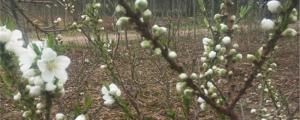How to Plant a Palm Tree in North Carolina
Palm trees are a great addition to any landscape and can add a tropical feel to your yard. While North Carolina might not be the first place that comes to mind when thinking about palm trees, they can actually thrive in certain areas of the state. Here are some tips on how to plant a palm tree in North Carolina:
Choose the Right Type of Palm Tree
The first step in planting a palm tree in North Carolina is to choose the right type of palm. Not all palm species can survive in the state’s climate, so it’s important to do your research and choose a tree that is well-suited for the area.
Some of the best palm tree species for North Carolina include:
Cabbage Palm (Sabal Palmetto)
Windmill Palm (Trachycarpus Fortunei)
Needle Palm (Rhapidophyllum hystrix)
These palm trees are native to the southeastern United States and are well-adapted to North Carolina’s climate and soil conditions.
Planting Location and Soil Preparation
Once you’ve chosen the right type of palm tree, it’s time to prepare the planting location. Palm trees require well-draining soil, so choose a location that has good drainage. Avoid planting in areas where water tends to pool.
Make sure to prepare the soil before planting. Add a mixture of compost and sand to the soil to improve drainage and ensure that the palm tree has a strong start.
Planting the Palm Tree
Before planting the palm tree, make sure that the root ball is moist. If the tree has been shipped to you, it might be necessary to soak the root ball in water for a few hours before planting.
Dig a hole that is slightly larger than the root ball of the palm tree. Carefully place the tree in the hole and backfill with soil. Make sure to tamp down the soil to remove any air pockets.
Water the newly planted palm tree thoroughly to help it settle into its new home.
Maintenance
Proper maintenance is crucial for the health and long-term success of your palm tree. Make sure to water it regularly, especially during hot and dry periods, and avoid over-fertilizing.
Prune dead or damaged fronds to prevent disease and pest problems. Make sure to use clean pruning tools to avoid spreading disease.
Finally, protect your palm tree from cold temperatures during the winter months. Cover it with burlap or a similar material to protect the trunk and leaves from freezing temperatures.
By following these tips, you can successfully plant a palm tree in North Carolina and add a touch of the tropics to your yard.

 how many times do yo...
how many times do yo... how many planted tre...
how many planted tre... how many pine trees ...
how many pine trees ... how many pecan trees...
how many pecan trees... how many plants comp...
how many plants comp... how many plants can ...
how many plants can ... how many plants and ...
how many plants and ... how many pepper plan...
how many pepper plan...































